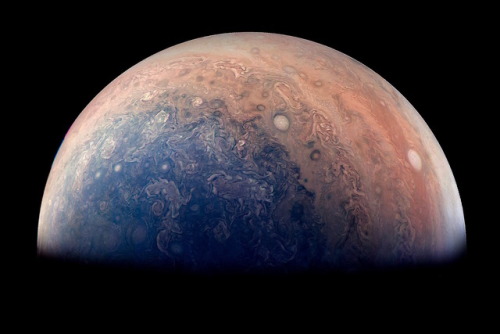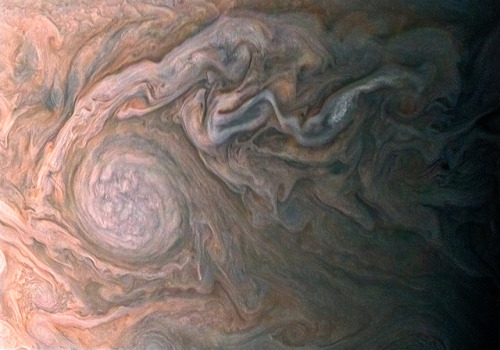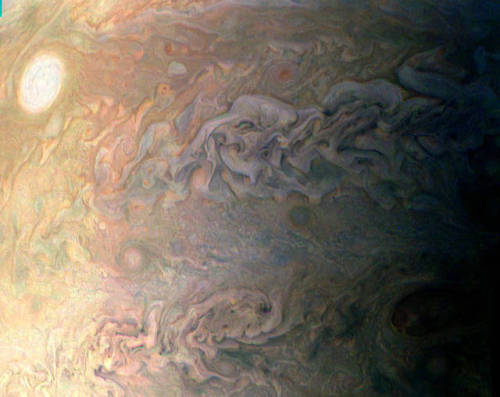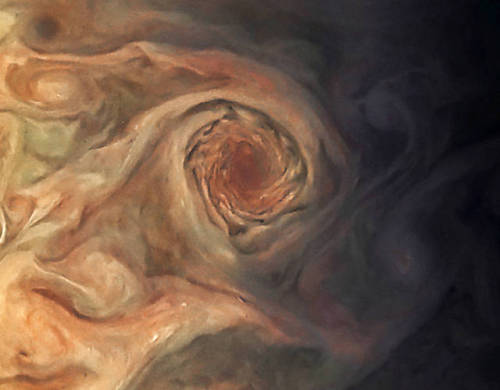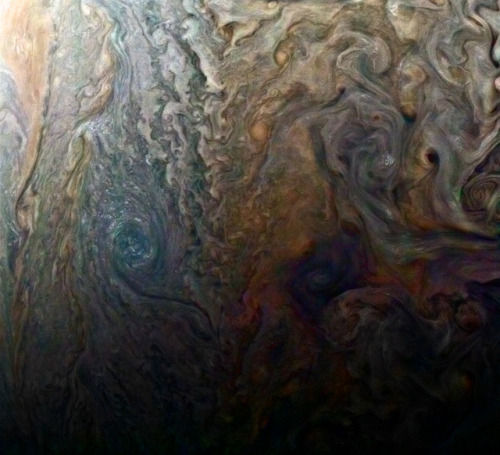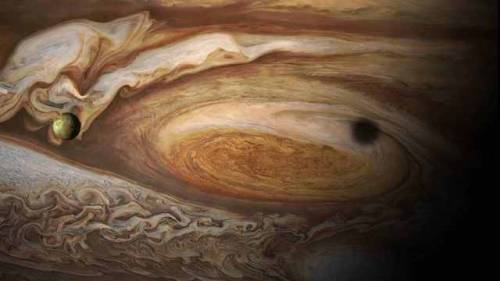Solar System: 10 Things To Know This Week
Solar System: 10 Things to Know This Week
Every day, our spacecraft and people are exploring the solar system. Both the public and the private sectors are contributing to the quest. For example, here are ten things happening just this week:
1. We deliver.

The commercial space company Orbital ATK is targeting Saturday, Nov. 11 for the launch of its Cygnus spacecraft on an Antares rocket from Wallops Flight Facility in Wallops Island, Virginia. Cygnus is launching on a resupply mission to the International Space Station, carrying cargo and scientific experiments to the six people currently living on the microgravity laboratory.
2. See for yourself.

Social media users are invited to register to attend another launch in person, this one of a SpaceX Falcon 9 rocket carrying the Dragon spacecraft from Cape Canaveral Air Force Station in Florida. This launch, currently targeted for no earlier than December, will be the next commercial cargo resupply mission to the International Space Station. The deadline to apply is Nov. 7. Apply HERE.
3. Who doesn’t like to gaze at the Moon?

Our Lunar Reconnaissance Orbiter (LRO) sure does—and from very close range. This robotic spacecraft has been orbiting Earth’s companion since 2009, returning views of the lunar surface that are so sharp they show the footpaths made by Apollo astronauts. Learn more about LRO and the entire history of lunar exploration at NASA’s newly-updated, expanded Moon site: moon.nasa.gov
4. Meanwhile at Mars…

Another sharp-eyed robotic spacecraft has just delivered a fresh batch of equally detailed images. Our Mars Reconnaissance Orbiter (MRO) surveys the Red Planet’s surface daily, and you can see the very latest pictures of those exotic landscapes HERE. We currently operate five—count ‘em, five—active missions at Mars, with another (the InSight lander) launching next year. Track them all at: mars.nasa.gov.
5. Always curious.

One of those missions is the Curiosity rover. It’s currently climbing a rocky highland dubbed Vera Rubin Ridge, turning its full array of instruments on the intriguing geology there. Using those instruments, Curiosity can see things you and I can’t.
6. A new Dawn.

Our voyage to the asteroid belt has a new lease on life. The Dawn spacecraft recently received a mission extension to continue exploring the dwarf planet Ceres. This is exciting because minerals containing water are widespread on Ceres, suggesting it may have had a global ocean in the past. What became of that ocean? Could Ceres still have liquid today? Ongoing studies from Dawn could shed light on these questions.
7. There are eyes everywhere.

When our Mars Pathfinder touched down in 1997, it had five cameras: two on a mast that popped up from the lander, and three on the rover, Sojourner. Since then, photo sensors that were improved by the space program have shrunk in size, increased in quality and are now carried in every cellphone. That same evolution has returned to space. Our Mars 2020 mission will have more “eyes” than any rover before it: a grand total of 23, to create sweeping panoramas, reveal obstacles, study the atmosphere, and assist science instruments.
8. Voyage to a hidden ocean.

One of the most intriguing destinations in the solar system is Jupiter’s moon Europa, which hides a global ocean of liquid water beneath its icy shell. Our Europa Clipper mission sets sail in the 2020s to take a closer look than we’ve ever had before. You can explore Europa, too: europa.nasa.gov
9. Flight of the mockingbird.

On Nov. 10, the main belt asteroid 19482 Harperlee, named for the legendary author of To Kill a Mockingbird, makes its closest approach to Earth during the asteroid’s orbit around the Sun. Details HERE. Learn more about asteroids HERE. Meanwhile, our OSIRIS-REx mission is now cruising toward another tiny, rocky world called Bennu.
10. What else is up this month?
For sky watchers, there will be a pre-dawn pairing of Jupiter and Venus, the Moon will shine near some star clusters, and there will be meteor activity all month long. Catch our monthly video blog for stargazers HERE.
Make sure to follow us on Tumblr for your regular dose of space: http://nasa.tumblr.com.
More Posts from Knowledgeiskeyuk and Others

I Don’t Want To Work By Zach Allia | More

January is national Braille literacy month. Did you know that Braille actually started out as military code developed so the French soldiers could read important messages without light? In fact, the code was known as night writing. It was the schoolboy Louis Braille who developed the more streamlined version of the alphabet used today. #WorldBrailleDay

What Jobs Will the Robots Take?
It is an invisible force that goes by many names. Computerization. Automation. Artificial intelligence. Technology. Innovation. And, everyone’s favorite, ROBOTS.
Whatever name you prefer, some form of it has been stoking progress and killing jobs—from seamstresses to paralegals—for centuries. But this time is different: Nearly half of American jobs today could be automated in “a decade or two," according to a new paper by Carl Benedikt Frey and Michael A. Osborne, discussed recently in The Economist. The question is: Which half?
Another way of posing the same question is: Where do machines work better than people? Tractors are more powerful than farmers. Robotic arms are stronger and more tireless than assembly-line workers. But in the past 30 years, software and robots have thrived at replacing a particular kind of occupation: the average-wage, middle-skill, routine-heavy worker, especially in manufacturing and office admin.
Read more. [Image: Reuters]
What is the point of space exploration?
This month in space
Astronomical & Astrological Events in November 🌌
November 1st: Moon at Aphelion; Jupiter conjunct Haumea
November 2nd: Saturn square Chiron; Moon conjunct Eris
November 3rd: Jupiter quintile Pluto
November 4th: Full Moon in Taurus; Taurids Meteor Shower
November 5th: Mercury enters Sagittarius; Moon at Perigee; Taurids Meteor Shower
November 7th: Venus enters Scorpio
November 10th: Moon conjunct Ceres; Last Quarter Moon in Leo
November 11th: Saturn trine Uranus; Venus conjunct Haumea
November 13th: Venus conjunct Jupiter
November 14th: Close approach of the Moon and Mars; Moon conjunct Makemake
November 16th: Moon conjunct Haumea and Venus
November 17th: Leonids Meteor Shower
November 18th: New Moon in Scorpio; Mars conjunct Makemake; Leonids Meteor Shower
November 20th: Moon conjunct Mercury; Moon at Perihelion
November 21st: Sun enters Sagittarius; Moon at Apogee
November 22nd: Neptune Direct; Jupiter sesquiquadrate Chiron; Moon conjunct Pluto; Mercury at Greatest Brightness
November 24th: Mercury at Greatest Eastern Elongation
November 26th: First Quarter Moon in Aquarius
November 28th: Mercury at Dichotomy; Mercury conjunct Saturn
November 30th: Moon conjunct Eris



Surprisingly erratic X-ray auroras discovered at Jupiter
ESA and NASA space telescopes have revealed that, unlike Earth’s polar lights, the intense auroras seen at Jupiter’s poles unexpectedly behave independently of one another.
Auroras have been seen in many places, from planets and moons to stars, brown dwarfs and a variety of other cosmic bodies. These beautiful displays are caused by streams of electrically charged atomic particles – electrons and ions – colliding with the atmospheric layers surrounding a planet, moon or star. Earth’s polar lights tend to mirror one another: when they brighten at the North pole, they generally brighten at the South pole, too.
The same was expected of auroras elsewhere, but a new study, published today in Nature Astronomy, reveals that those at the gas giant Jupiter are much less coordinated.
The study used ESA’s XMM-Newton and NASA’s Chandra X-ray space observatories to observe the high-energy X-rays produced by the auroras at Jupiter’s poles. While the southern auroras were found to pulse consistently every 11 minutes, those at the planet’s north pole flared chaotically.
“These auroras don’t seem to act in unison like those that we’re often familiar with here on Earth,” says lead author William Dunn of University College London’s Mullard Space Science Laboratory, UK, and Harvard-Smithsonian Center for Astrophysics, USA.
“We thought the activity would be coordinated through Jupiter’s magnetic field, but the behaviour we found is really puzzling.
“It’s stranger still considering that Saturn – another gas giant planet – doesn’t produce any X-ray auroras that we can detect, so this throws up a couple of questions that we’re currently unsure how to answer.
“Firstly, how does Jupiter produce bright and energetic X-ray auroras at all when its neighbour doesn’t, and secondly, how does it do so independently at each pole?”
With the data at hand, William and colleagues identified and mapped X-ray hot spots at Jupiter’s poles. Each hot spot covers an area half the size of Earth’s surface.
As well as raising questions about how auroras are produced throughout the cosmos, Jupiter’s independently pulsing auroras suggest that there is far more to understand about how the planet itself produces some of its most energetic emissions.
Jupiter’s magnetic influence is colossal; the region of space over which the Jovian magnetic field dominates – the magnetosphere – is some 40 times larger than Earth’s, and filled with high-energy plasma. In the outer edges of this region, charged particles ultimately from volcanic eruptions on Jupiter’s moon, Io, interact with the magnetic boundary between the magnetosphere and interplanetary space. These interactions create intense phenomena, including auroras.
“Charged particles have to hit Jupiter’s atmosphere at exceptionally fast speeds in order to generate the X-ray pulses that we’ve seen. We don’t yet understand what processes cause this, but these observations tell us that they act independently in the northern and southern hemispheres,” adds Licia Ray, from Lancaster University, UK, and a co-author.
The asymmetry in Jupiter’s northern and southern lights also suggests that many cosmic bodies that are known to experience auroras – exoplanets, neutron stars, brown dwarfs and other rapidly-rotating bodies – might produce a very different aurora at each pole.
Further studies of Jupiter’s auroras will help to form a clearer picture of the phenomena produced at Jupiter; auroral observing campaigns are planned for the next two years, with X-ray monitoring by XMM-Newton and Chandra and simultaneous observations from NASA’s Juno, a spacecraft that started orbiting Jupiter in mid-2016.
ESA’s Juice will arrive at the planet by 2029, to investigate Jupiter’s atmosphere and magnetosphere. It, too, will observe the auroras and in particular the effect on them of the Galilean moons.
“This is a breakthrough finding, and it couldn’t have been done without ESA’s XMM-Newton,” adds Norbert Schartel, ESA project scientist for XMM-Newton.
“The space observatory was critical to this study, providing detailed data at a high spectral resolution such that the team could explore the vibrant colours of the auroras and figure out details about the particles involved: if they’re moving fast, whether they’re an oxygen or sulphur ion, and so on.
“Coordinated observations like these, with telescopes such as XMM-Newton, Chandra and Juno working together, are key in exploring and further understanding environments and phenomena across the Universe, and the processes that produce them.”

Cambridge University scientists have identified a chemical in the brain that blocks unwanted thoughts, offering a new avenue to treat neurological disorders. http://ift.tt/2lXzefU
It takes the American beaver 24 hours to learn to swim after being born. Learn more about beavers and how they shape the world around them.
Today is the birthday of the renowned theoretical physicist Stephen Hawking. Doctors grimly estimated that he wouldn't make it past his twenties, and today he turns 76 - and still one of the sharpest minds in the world. Happy birthday Stephen!
"Develop a passion for learning. If you do, you will never cease to grow." Anthony J. D'Angelo. Visit our website at https://knowledgeiskey.co.uk
66 posts
